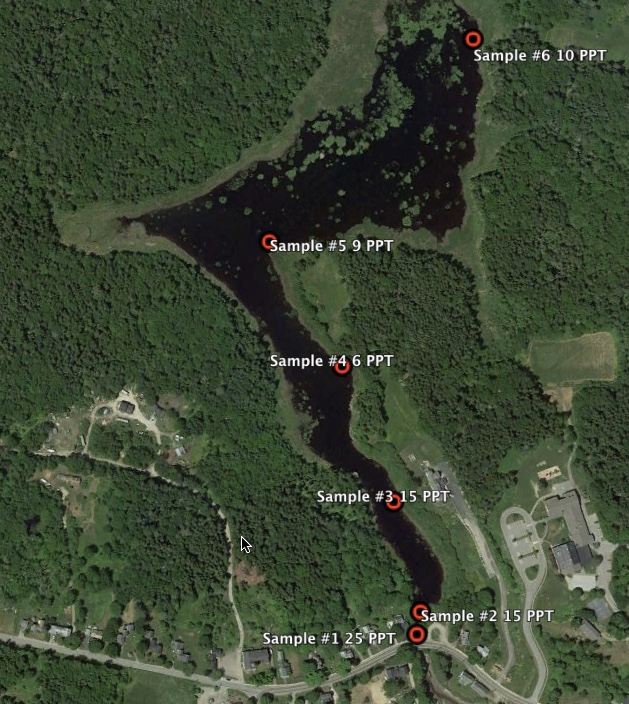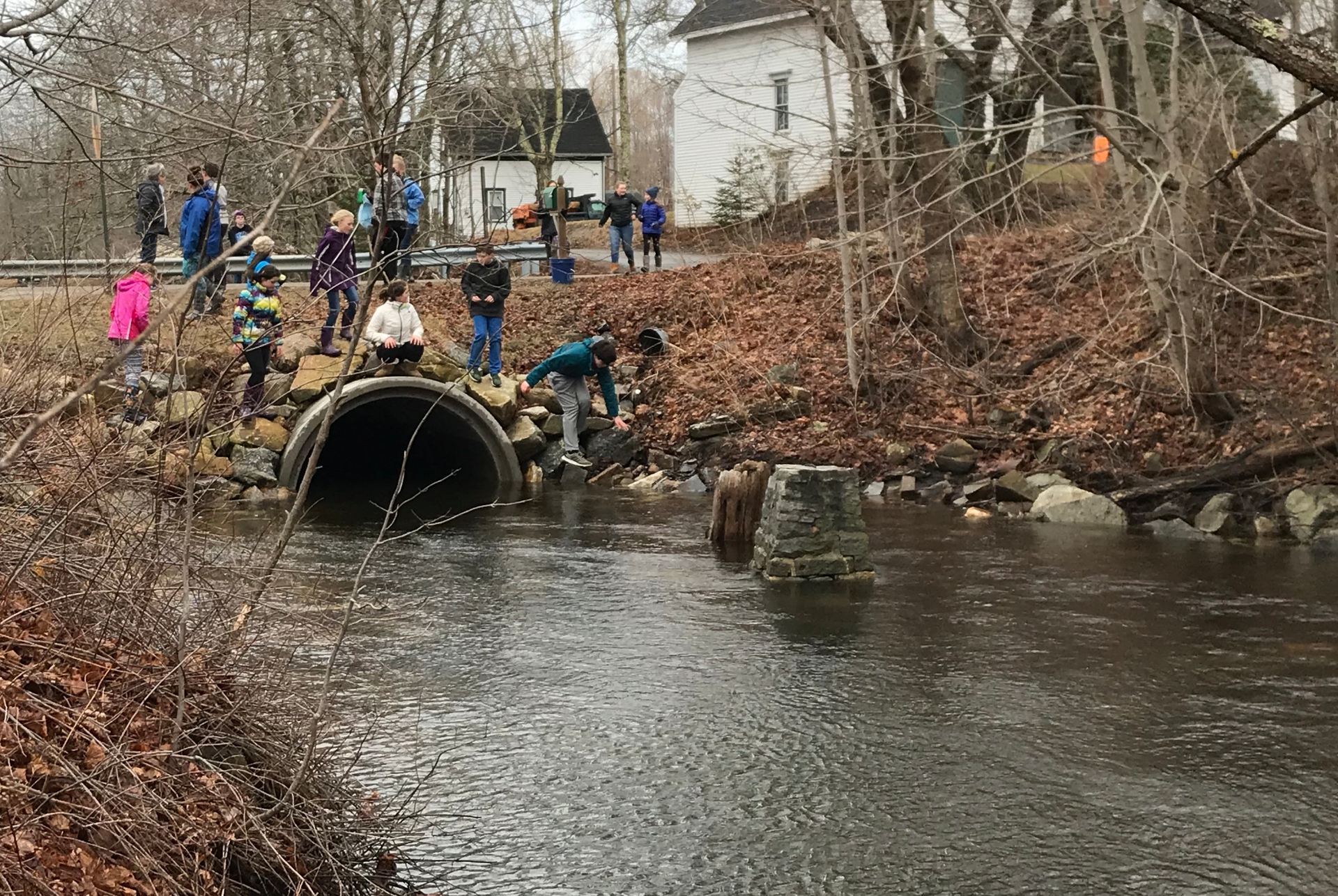With the recent flooding tide of Friday, March 2nd observed by middle level students, (11.4 foot tide and ‘Nor Easter winds) Ms. Palmer sampled the marsh on Sunday (10.9 foot tide), using a salinity refractometer. Here is the discussion the class had that next day, captured by Lydia Myers, when Ms. Palmer came to our classroom to share her data.
The Marsh’s Salinity

Contributed by Lydia Myers
We had a group discussion with Mrs. England, and Mrs. Palmer about the salinity in the marsh. On Friday March 2nd, Mrs. Palmer walked alongside the marsh and tested the salinity in five different places.
What she discovered was, that close to the culvert where the ocean water comes into the marsh, the salinity there was 25 ppt (part per thousand). I thought this was interesting because the ocean water is rushing into the marsh at a considerably steady pace, when the tide comes in, so I thought that there might have been a higher ppt, as the ocean’s is 33 ppt. She explained how she continued to walk along the marsh’s bank and test the salinity of the water every so often. Mrs. Palmer recorded four other times, the numbers that were seen in order were, (25) 15, 6, 9, and 10 ppt.

As she was telling us what the numbers were and where they were recorded I was surprised when it went from six to nine. At first when she said six I thought the other two spots must have had a really low ppt, but I was amazed that it was just the opposite.
This could be a possible problem for the alewive population, as they come in with the tide to breed in the freshwater marsh around the time of May and June, though it is a possibility that the salinity could decrease from now to then.
Before 2016, no one had seen any alewives in the marsh in over 30 years. Efforts were made from 2009 to 2013 to bring back the alewive population by restocking the marsh with 500 alewives in the spring of each of those four years. Finally the town’s efforts had paid off when, of all people, Mrs. England and some of her now former students, observed three small alewives in a very small amount of water collected in the culvert during a low tide! Though the number of fish had been few, it was a huge accomplishment. Soon after they had observed even more of the fish, at one point in time they even netted approximately ten fish and brought them into the marsh. To this day the alewives have been witnessed swimming back into their birth place (the marsh).
Mrs. England had mentioned the state may possibly be restocking the marsh again this, or next year. We have some concerns about the spawning of the restocked fish, because of the amount of salt in the marsh, as the alewives need a salinity if 0-5ppt to successfully repopulate. One of our main concerns is if the amount of salt in the marsh will damage the fish eggs.
Now that we have this information about the salinity in the marsh, I wonder if this has anything to do with the alewife problem, and how/why that much salt water is so far back in the marsh.


